What is Scaffolding?
Scaffolding Definition
Scaffolding is a temporary rigid structure that acts as a platform to carry out the work by the workers in an elevated structure.
Scaffoldings are widely used to support construction work such as brickwork, plastering, painting, and other renovation works(refer to the below image). These are mandatory in the construction site as the worker’s safety mainly depends on this and this comes under safety regulation, failing to use scaffolding may lead to OSHA violation which can attract law actions from the local municipal.
Scaffolding Parts and Functions
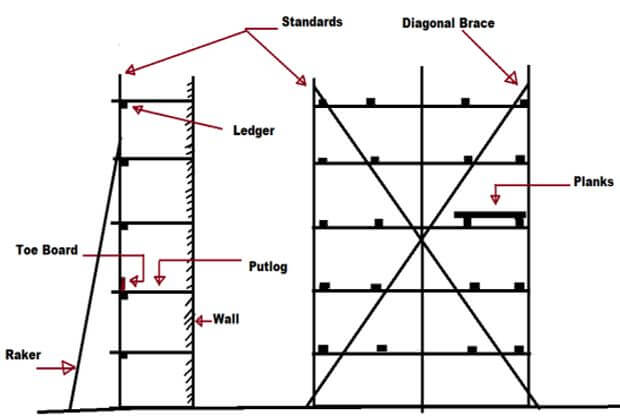
Standards
Standards are the verticle members of the scaffolding that are embedded into the ground for support purposes. The verticle members are spaced at 2.4-3.0m.
Putlogs
Putlogs are the horizontal members that act as a supporting platform that rests on ledgers. Putlogs are normally 90 cm in length and spaced at 1.2m.
Braces
Braces are basically poles that are tied by ropes diagonally to stiffen the scaffolding. These not only strengthen the scaffolding structure but also prevent oscillation of the structure.
Ledger
Ledger is a horizontal member that is parallel to the wall firmly fixed in the standard and provides support to the putlog. It is vertically spaced at 1.2 – 1.5 m.
Boarding or Planks
Boarding members are the horizontal platform used by masons to support workmen and material. These are supported on the putlogs.
Guard Railings
Rail provided at about 1 m level to guard the men working on the boarding.
Toe board
Boards placed parallel to boarding near the wall to give protection to workers.
Base plate or sole plate
These plates are provided on the ground for supporting standards.
Also Read – Folded plates | Types of Folded Structure | Advantages & Disadvantages
Types of Scaffoldings
There are 7 types of scaffolding that are used in construction sites.
1. Single scaffolding or Bricklayer scaffolding
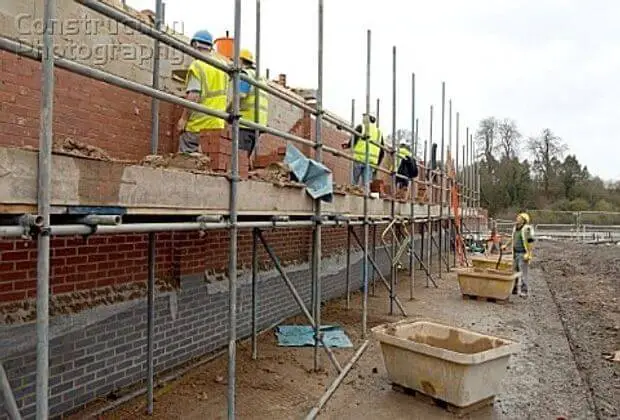
These types of scaffolding are constructed parallel to the wall consisting of an outer row of verticals(standards) to which long poles(steel or wooden) are tied at different levels to provide a working platform.
The putlogs are tied to the standards at the outer end and rest on the walls. at an interval of 1.2 to 1.3m. Generally, the distance between standards is kept from about 2m to 2.5m.
Sometimes for extra strength and stability cross braces are used. Single scaffolding is commonly used during brickwork and it is quite less expensive.
2. Double or Mason’s Scaffolding
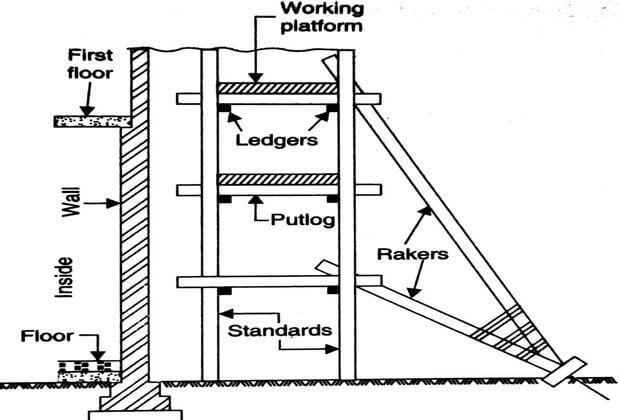
Double scaffolding is commonly used where it is not possible to rest the pole on the wall(Can’t make a hole to insert putlog) or where single scaffolding can are not suitable. Stonemasonry is the best example of Double scaffolding.
The framework of double scaffolding involves two rows of standards, ledgers, braces, putlogs, etc.
Double scaffolding is also known as independent scaffolding as they do not rest on the wall for support.
3 Cantilever or Needle Scaffolding
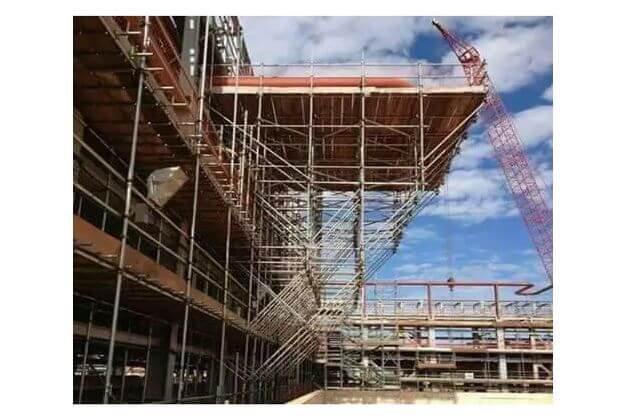
In cantilever scaffolding, the standards are supported on a series of needles and these needles are projected outside through holes in the wall. Cantilever scaffolding is also called single frame type scaffolding.
In other types, these needles are strutted inside the floors through the openings and this is known as independent or double frame type scaffolding. It is necessary to follow OSHA rules while constructing cantilever scaffolding.
These types of Scaffoldings are used under the following conditions:
- In case of less ground capacity to support the standards.
- When there is no suffecient ground space near the wall.
- These are used when the upper part of wall is under construction.
4 Suspended Scaffolding
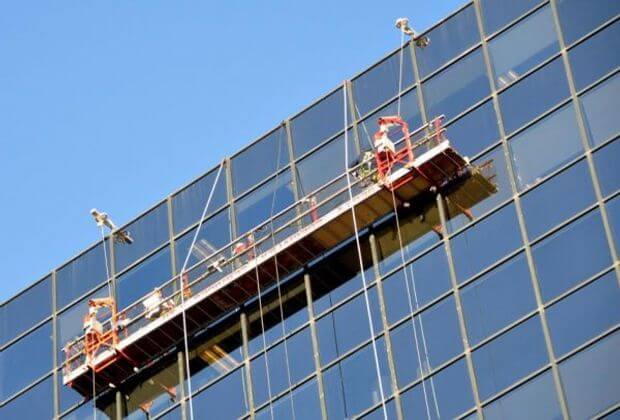
As the name suggests, In this type of scaffolding the platform is suspended from the roof to a required height, these are supported by ropes or chains, etc. Suspended Scaffolding can be lowered or raised to the required level by pulling or lowering the ropes or chains.
Suspended Scaffolding is mostly used during the repair, paintings, and pointing works.
5 Trestle Scaffolding

Trestle scaffolding is a movable scaffolding, Here the platform is provided on a movable ladder. This type of scaffolding is generally used for interior works such as repairs, paintings, etc. (Refer to the image for better understanding).
6 Steel Scaffolding

This type of scaffolding is very easy to construct and dismantle. Steel scaffolding is constructed using steel rods or tubes of required height and these are fixed to each other using steel coupler or fittings.
Steel scaffolding provides greater strength, durability, and higher fire resistance. Steel scaffolding is not economical when compared to wood scaffolding but from a safety point of view, these are more reliable.
7 Patented Scaffolding
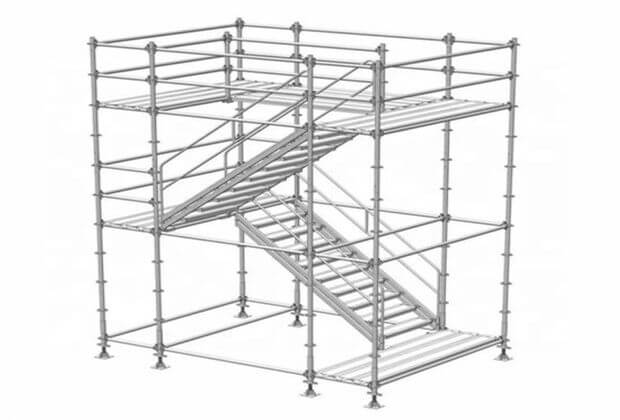
This type of scaffolding is also made of steel, but these are equipped with a special type of coupling and frames, etc. Usually, the working platform is supported on a bracket that can be adjusted to any suitable height. Moreover, the bottom of the standards is fixed with wheels so that they can be moved from one place to other within no time.
Also Read – Residential Site Plans Examples | Site plan vs Floor plan Difference


